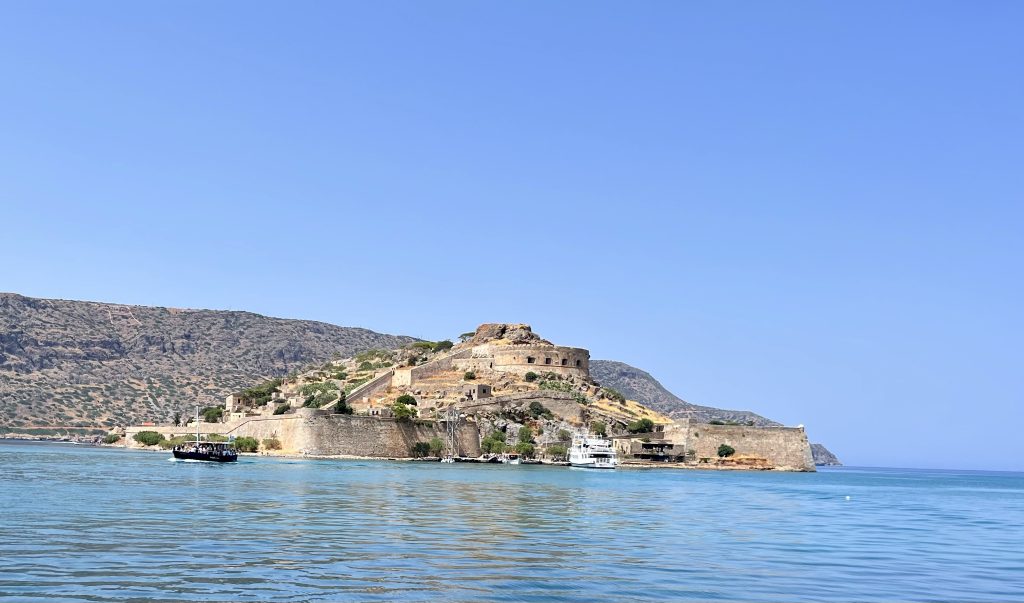
Spinalonga
On Friday we left Elounda, Josie and Lauren heading back to London, and me on to Chora Sfakion, although with a few days in between back in Rethymno.
On our last day I decided to brave the stifling heat and took a twenty minute boat ride to Spinalonga, an island across the bay. It’s had strategic maritime importance for centuries (see below), although it’s probably best known today for having been a leper colony from 1903 to 1957, and for featuring in a novel about that time, The Island, by English author, Victoria Hislop. Apparently she lives half the year on Crete and Stavros and Maria, who picked me up from Rethymno bus station, tell me that the book was televised in Greece and on the Monday of the last episode the streets of Crete were silent as everyone tuned in, and many tears were shed.
Where Elounda stands today there was once an ancient Dorian city, Olous, now submerged in the waters of the bay, most likely following an earthquake and land shift around 200BC. Surveys have revealed remains that suggest the existence of buildings and roads, including the foundations of large public buildings. And ancient texts have been found, which link the town with the city of Knossos, the largest Bronze Age archeological site on Crete, believed to be/have been, Europe’s oldest city
Given the importance of Olous and the need to protect the route into its port from pirate raiders, Spinalonga’s position ensured that it was fortified many years before, but most substantially during the years of Venetian occupation.
On the day that I visited the temperature was around 33°. Being a colossal mound of stone it was much like a storage heater. I and other visitors crawling around it’s huge area in hot sun all looked like we’d just showered in our clothes. It wasn’t the best time to visit.
I took a few pictures, none of which really give a true picture of the scale of the place, but here they are.
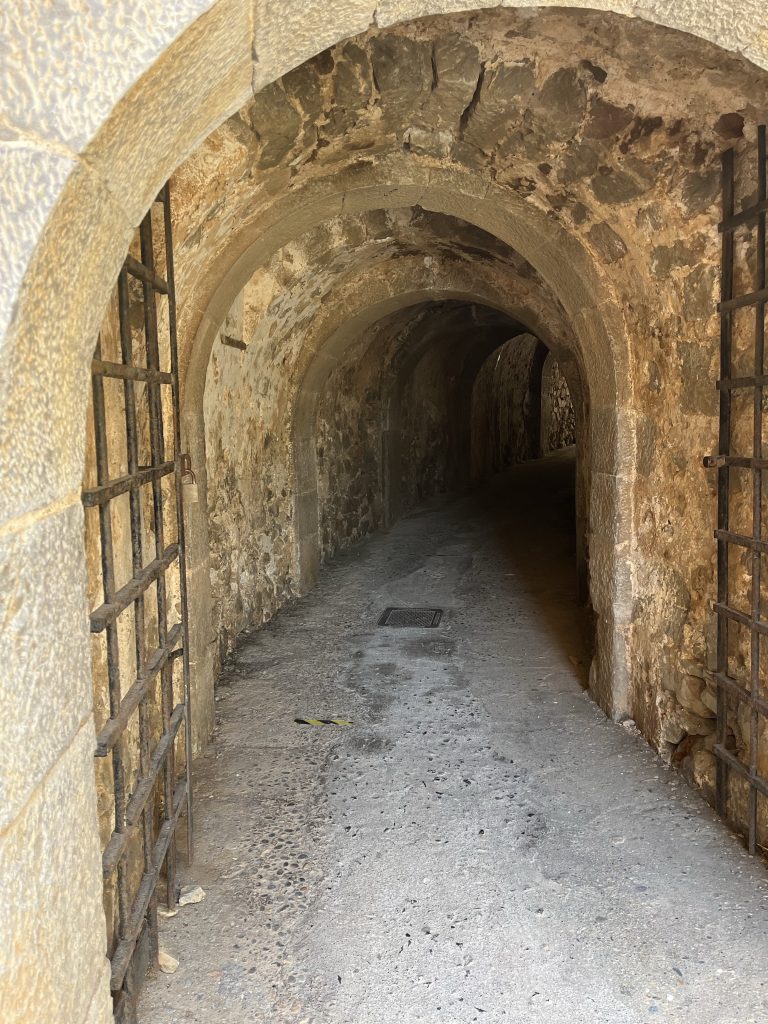
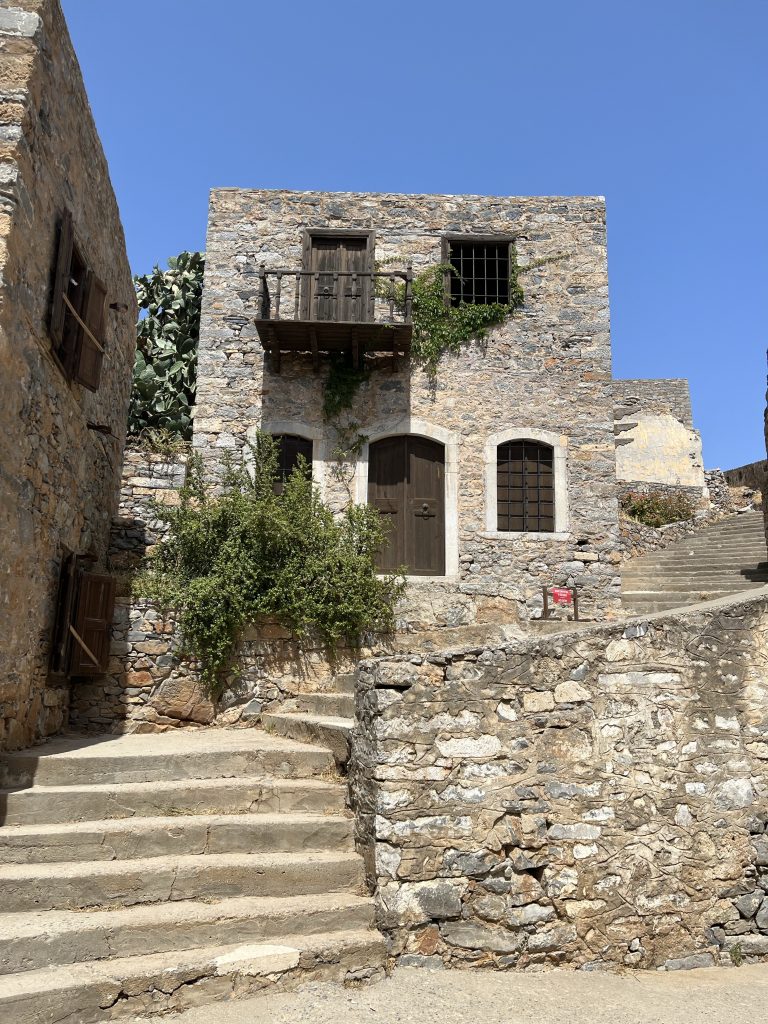
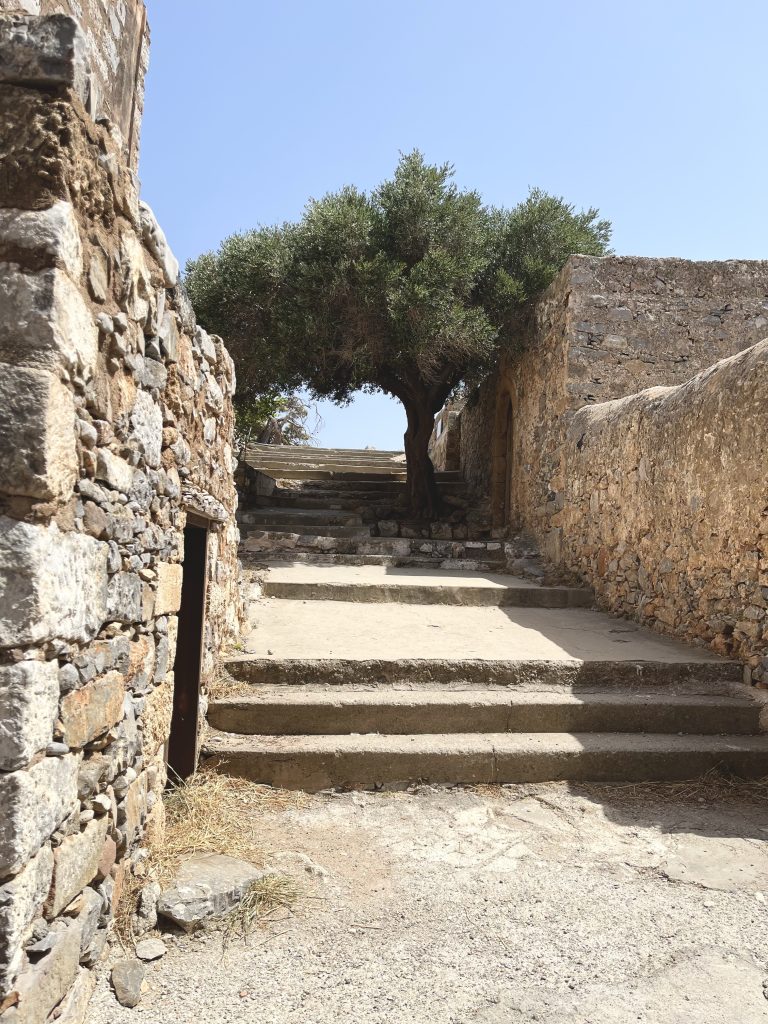
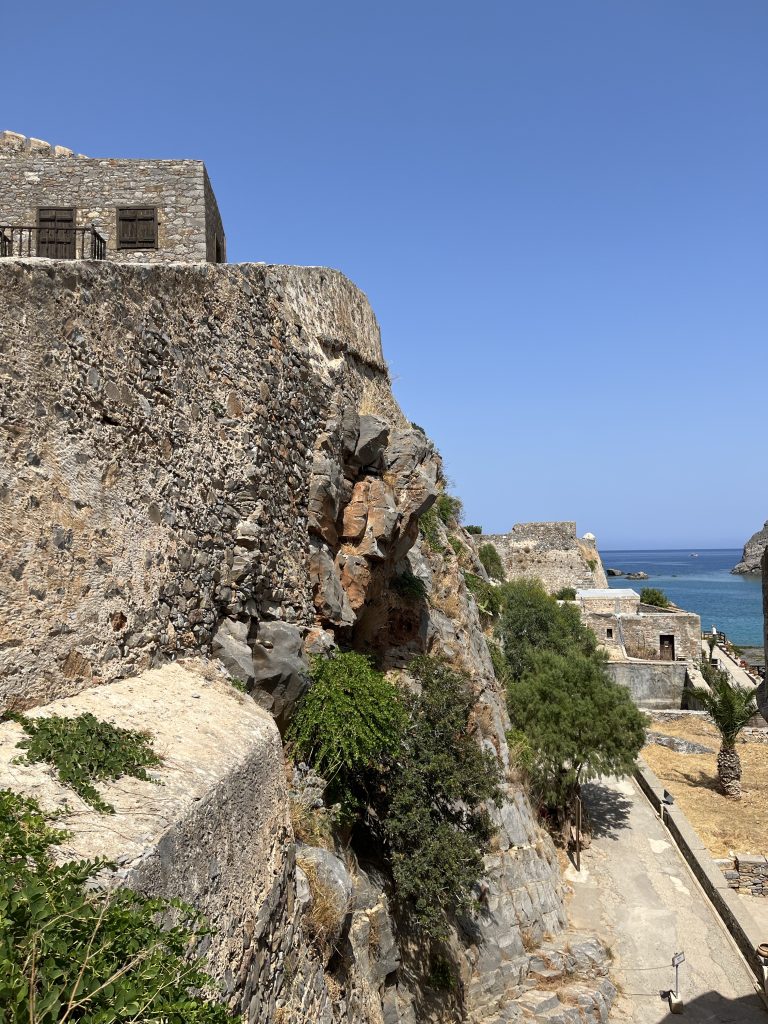
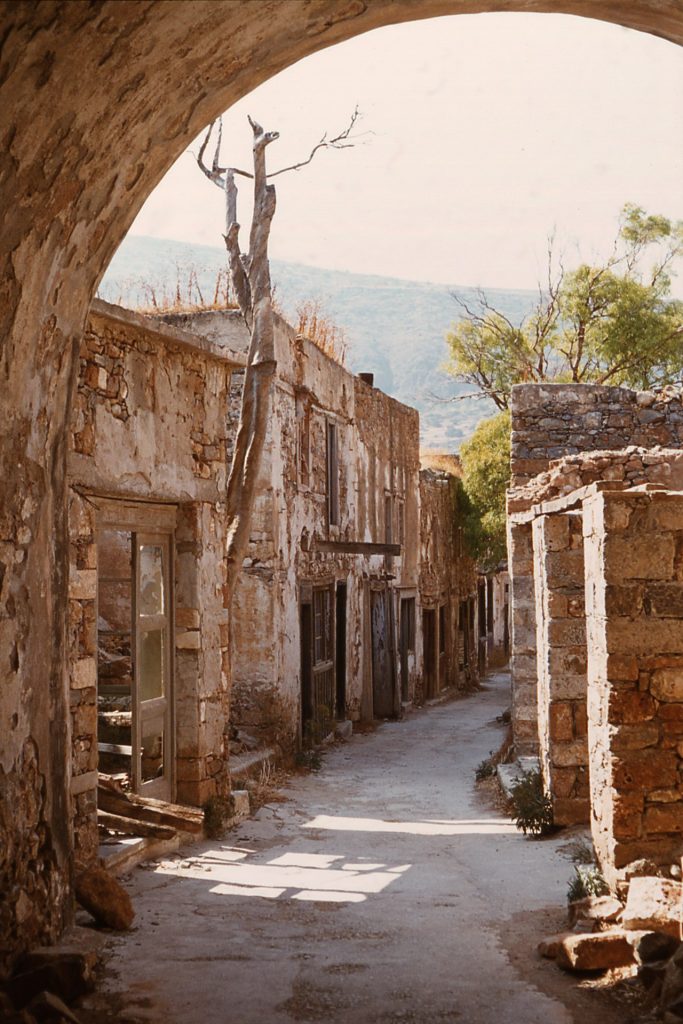
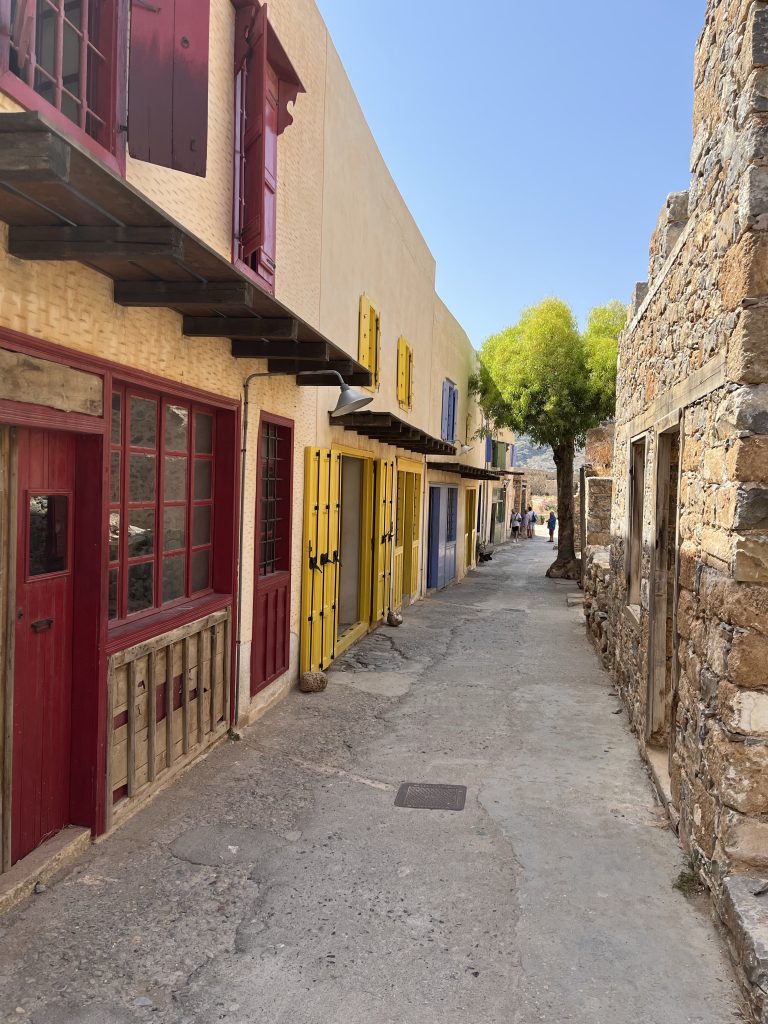
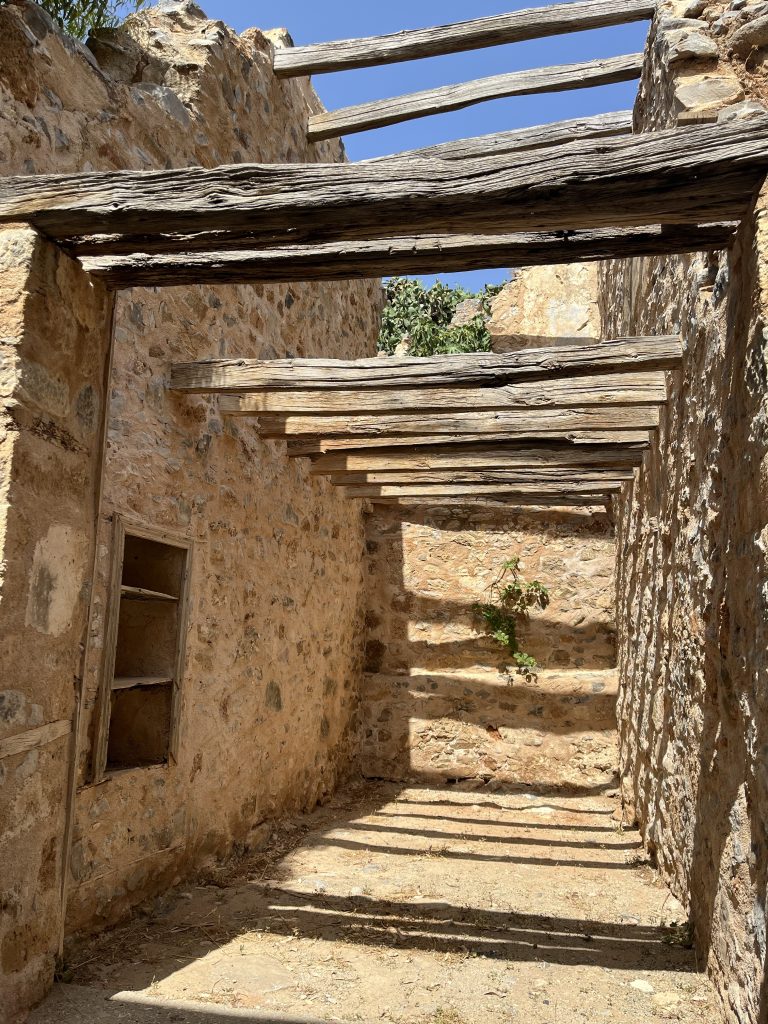
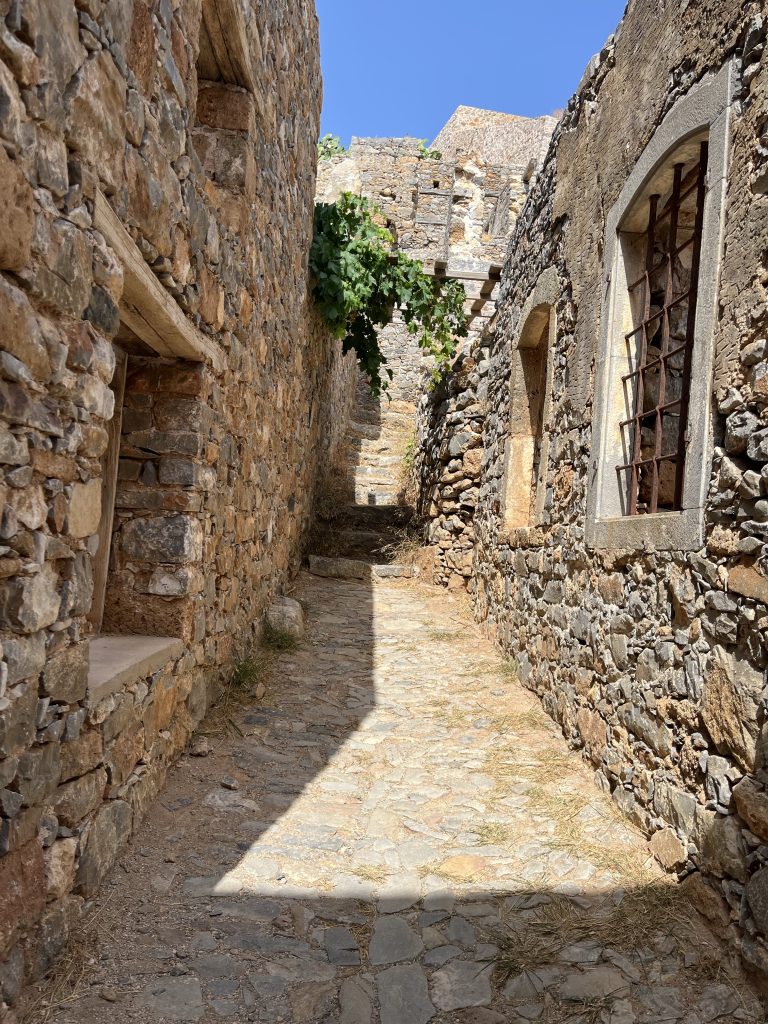
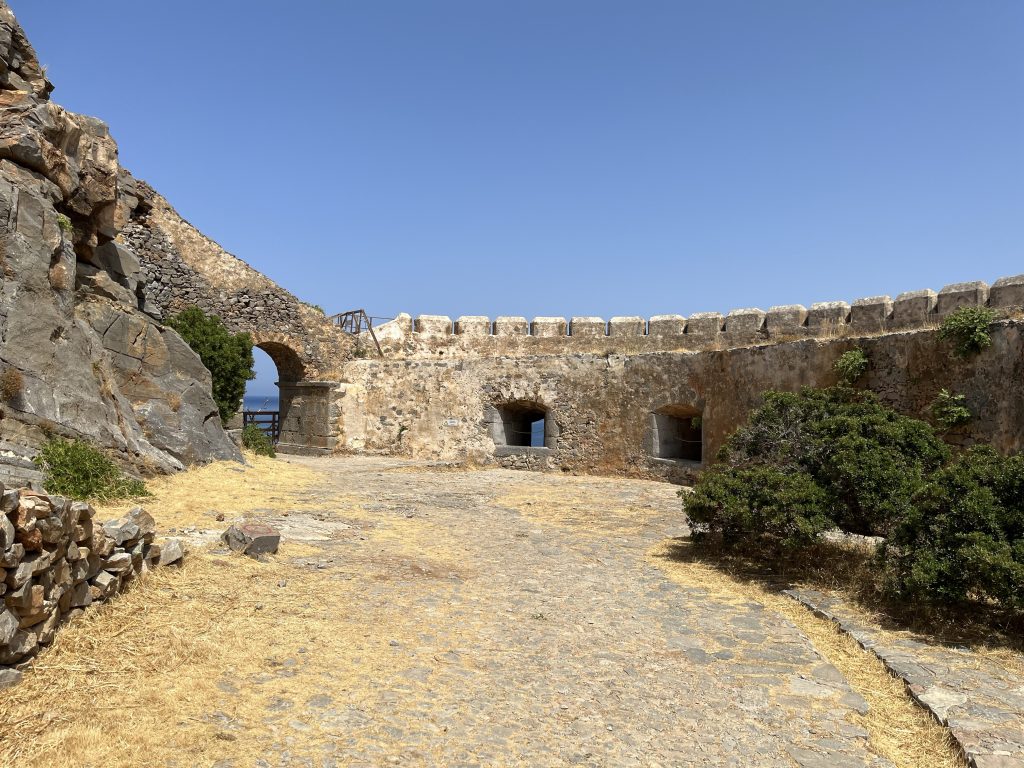
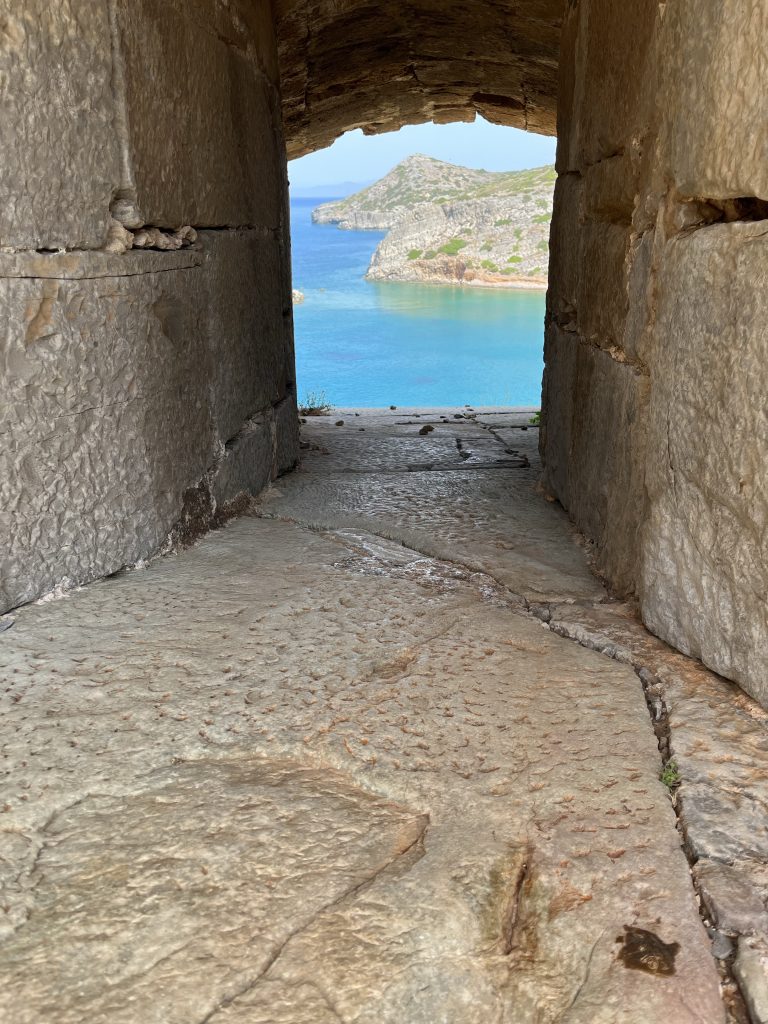
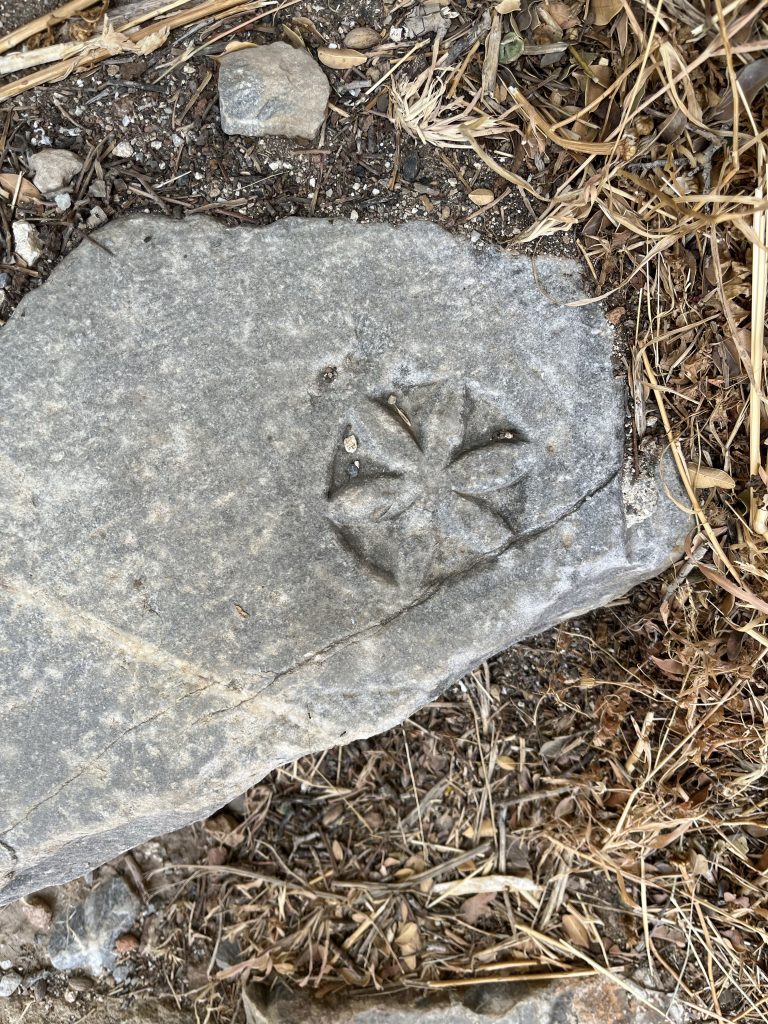
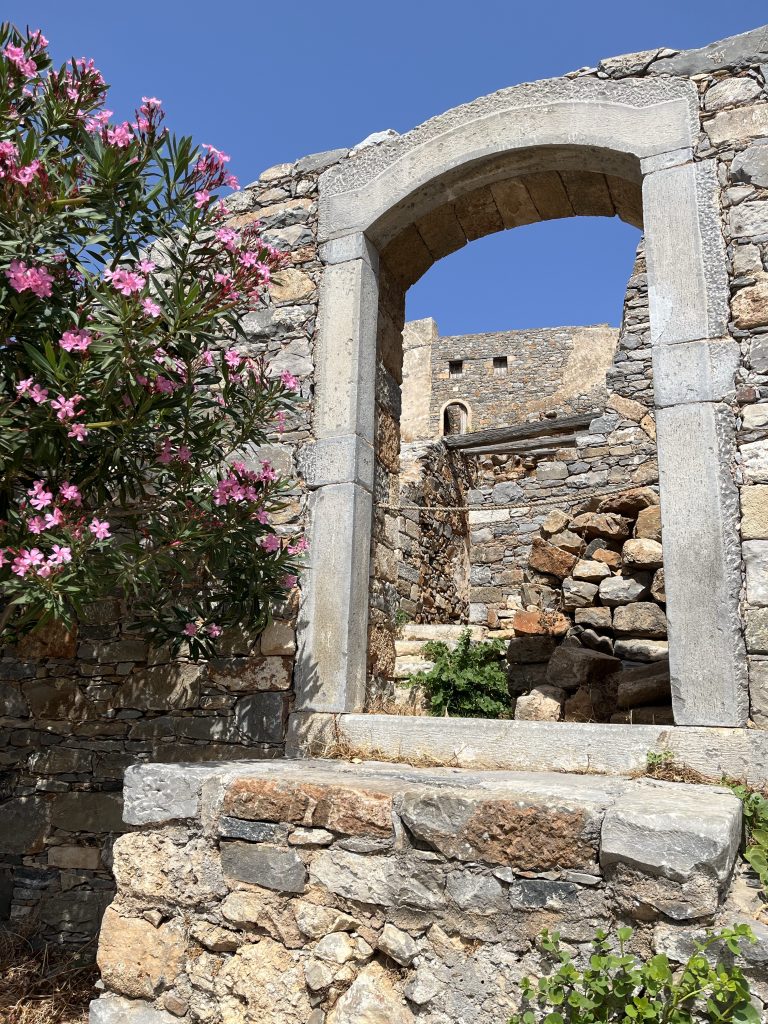
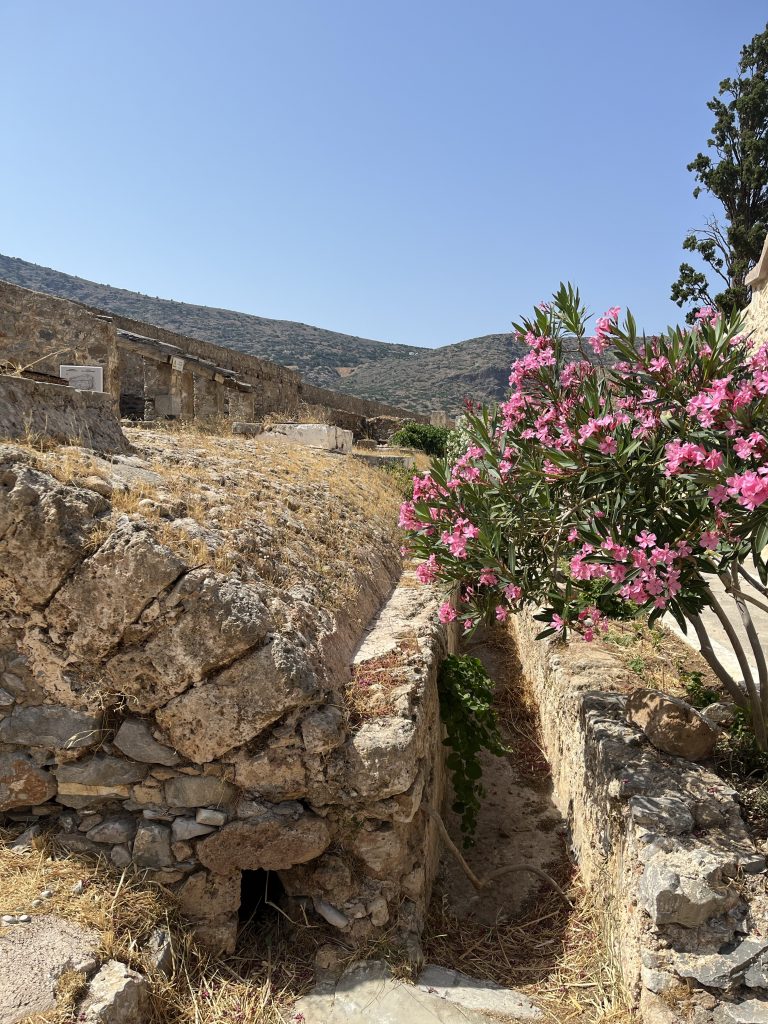
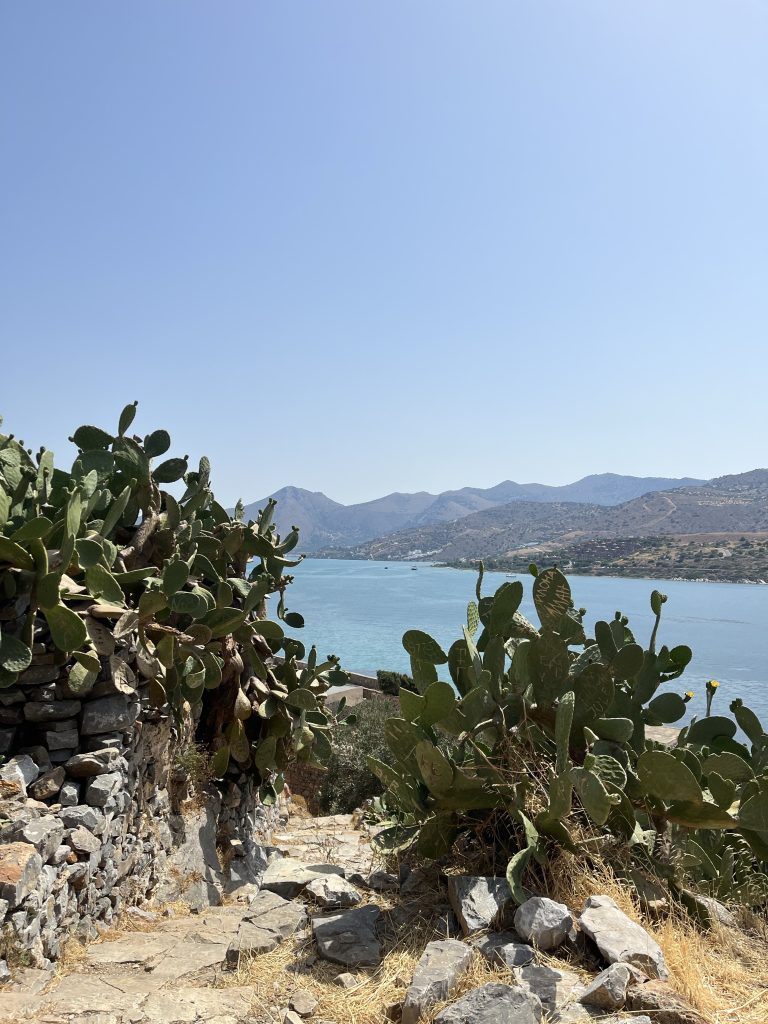
Imperial Airways
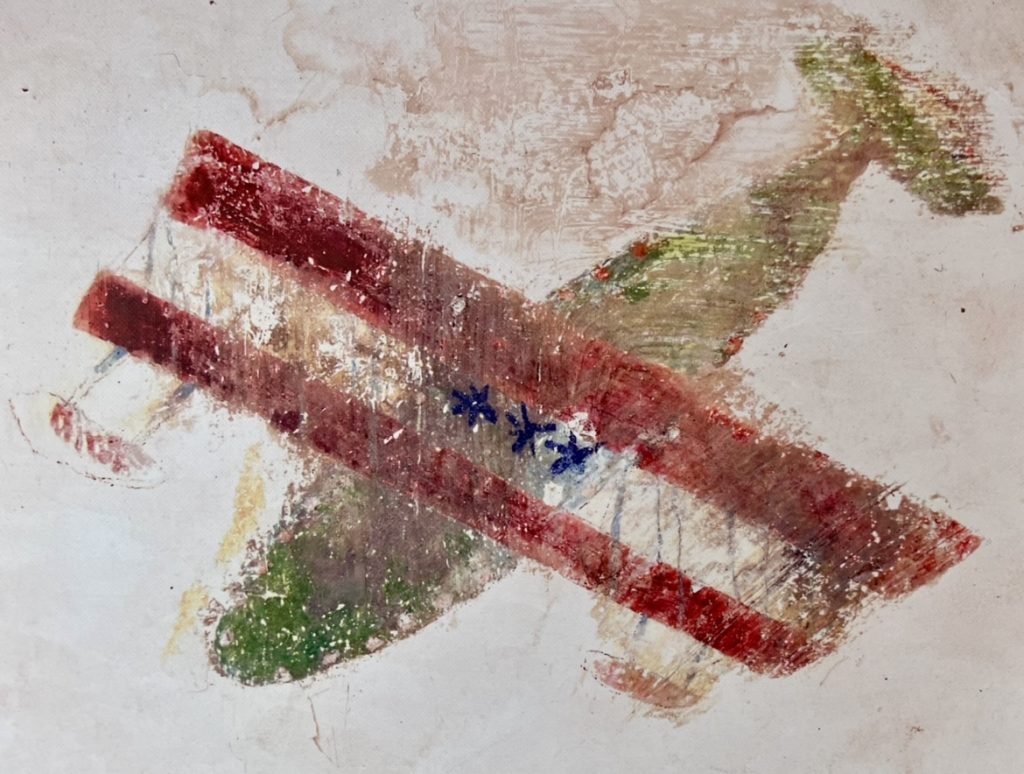
Imperial Airways was the early British commercial long-range airline operating from 1924 to 1939. The Bay of Elounda was used as a supply base for its flying boat on its route connecting Britain with India. It carried passengers and all the important correspondence of empire from Britain to India and Australia.
In August 1938 there were eight weekly flights from England to Egypt, five of which would land in the Gulf of Elounda and fly on to Calcutta, India, and Sydney, Australia. The whole journey would last ten days or less while the same one by boat would normally take thirty. There were frequent accidents. In its first six years of operation thirty-two people died in seven incidents. It eventually merged into the British Overseas Airways Corporation (BOAC), and in turn with British European Airways (BEA), finally becoming British Airways in 1974.
I found the flying boat wall painting hauntingly beautiful in its poignancy. It seemed to tell the story of the island’s time as a leper colony from a perspective that all the decaying, empty buildings never could. It was revealed in 2013 during operations to shore up one of the island’s properties. Although simplistic in style experts were able to identify from the detail that it was a particular model of the flying boats that used to land in the bay.
Presumably executed to fill the long days of island isolation I imagined the painter looking out plaintively from the fortress as important people flew in and away from the bay like birds, enjoying a freedom they would never know. Nor would they ever know that thousands of people a year would one day be able to share that moment, long after they and the colony had gone. A lone, ghostly voice calling out once more from the fortress. If it were music it would be the blues.
Josie and Lauren
And here’s my long shadowed, cheeky daughter and partner, with whom I’ve just spent a lovely few days in Elounda. They’re now home sweet home in London. Lovely to see you both. Thinking of our next trip! See you soon xx.
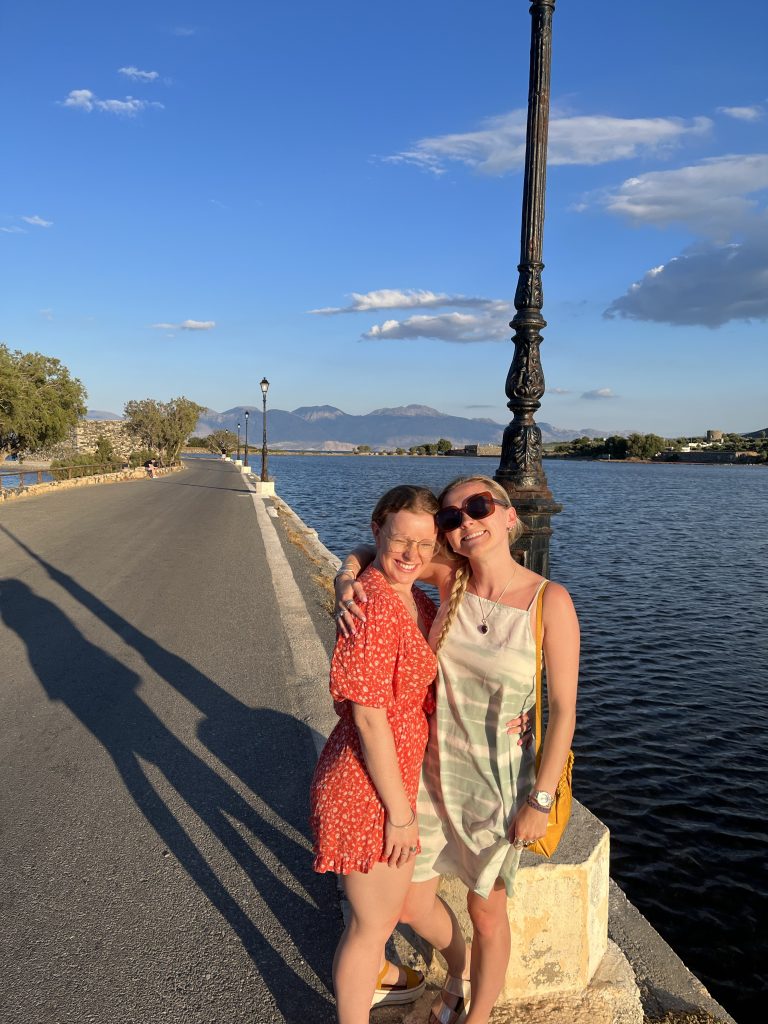
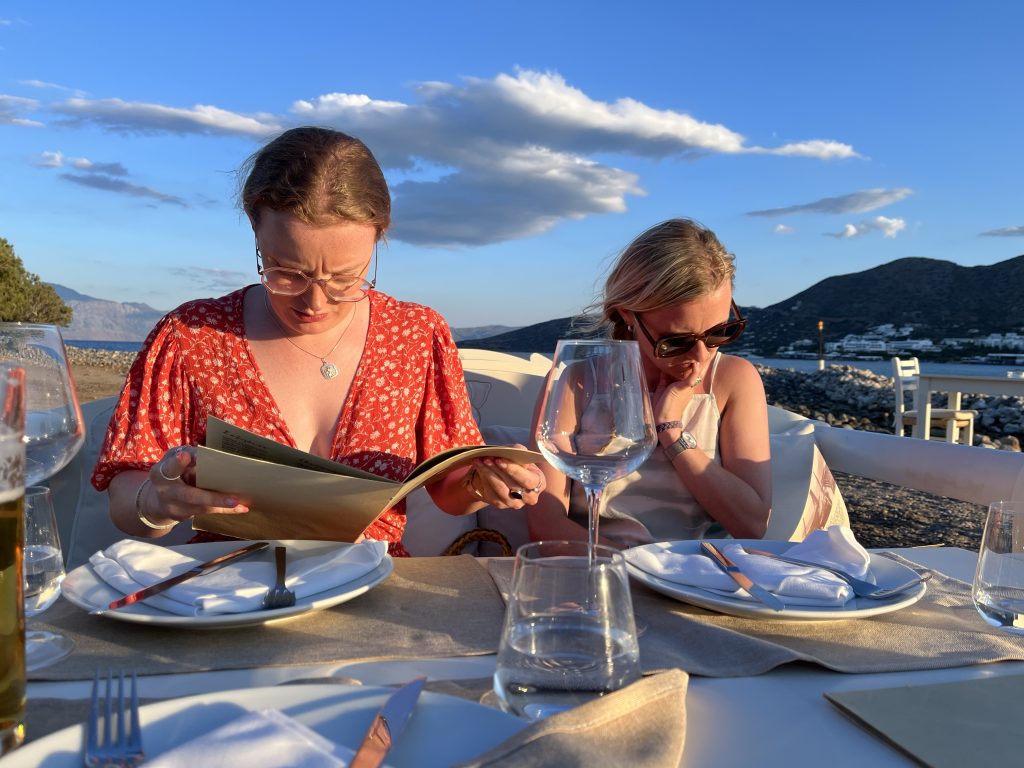
What fun we had, love you xx